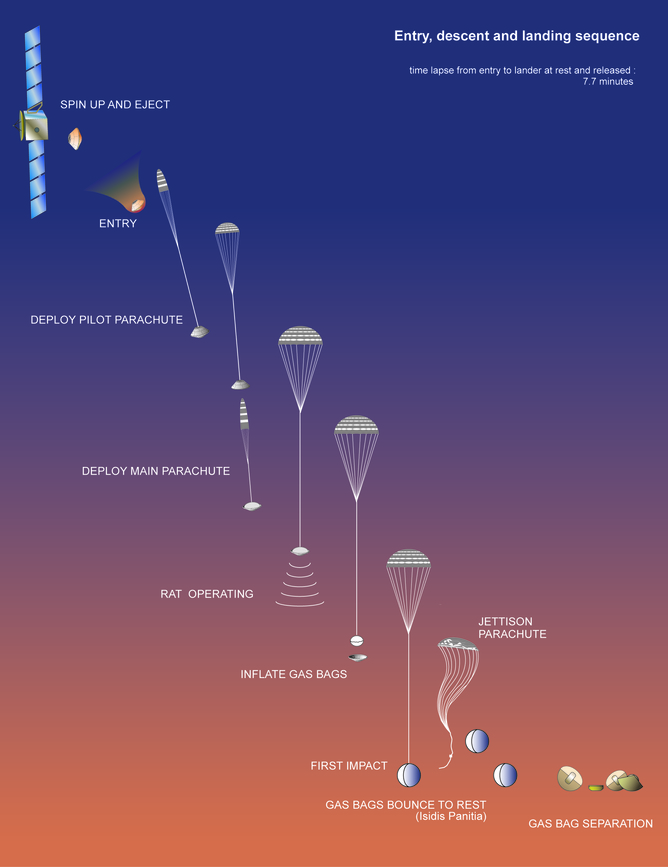By Monica Grady, The Open University
Landing a spacecraft on a celestial body, whether it be the moon, Mars or a comet, is not easy. The European Space Agency found out the hard way in 2003 when its robot Beagle2, which was supposed to send back a signal after landing on Mars, didn’t do so.
But more than a decade after it went missing, the UK Space Agency has announced that the the elusive Beagle2 lander has been re-discovered.
Beagle2 was ejected from the Mars Express spacecraft on December 19, 2003, and was scheduled to land on December 25. The landing had Beagle2 protected by inflated airbags, which would be released from the lander and roll away before deflating. Beagle2 would then deploy its solar panels, before communicating with orbiting craft. Unfortunately, no signal was received, and after desperate attempts to communicate with Beagle2, it was sadly concluded that the lander had been lost.
The subsequent inquiry found that the most likely causes of the loss were either a problem with the Entry, Descent and Landing System (EDLS) or sheer bad luck. It now looks as though the EDLS worked – so that leaves bad luck.

UKSA
The images that have sparked the news come from the HiRise camera on board NASA’s Mars Reconnaissance Orbiter. This is an instrument which is able to take very high resolution images of Mars’ surface. The scientists leading the search for the missing Beagle2 were looking for “something that wasn’t red, and wasn’t a pointy rock”. Given that this doesn’t narrow the field down very much, it is testament to the amazing perseverance and talents of the individuals concerned that they have managed to locate the lander.
It is poignant that the information comes at this time – Colin Pillinger was very much the driving force behind Beagle2, and one of the leaders of the Rosetta mission. His premature death last year deprived the scientific community of one of its most charismatic members. How he would have gloried in the re-discovery of Beagle2.
In contrast to the finding of Beagle2 comes news of another of ESA’s landers: Philae. Getting Rosetta spacecraft to drop Philae was an exciting and nerve-wracking time – the lander successfully sent an arrival signal, but subsequent information showed that Philae hadn’t landed where it was supposed to.
Since the mid-November landing, there have been several possible sightings of Philae from cameras on-board Rosetta. But none has been confirmed as the lander. Rosetta is continuing its science mission – which means that it has moved further away from the nucleus of comet 67P Churyumov-Gerasimenko.
It is now taking wider-field images of the comet’s nucleus, to search for signs of developing surface activity, rather than the more narrow, specific area images that were being acquired in the search for Philae.
Even though the exact location of Philae is unknown, the lander is not lost. It is misplaced, and there is hope that when Rosetta next approaches close to the nucleus, in mid-February, it will once again be able to resume scanning for its delinquent child.
And what of ESA’s third lander – the hugely successful Huygens spacecraft? This is also celebrating its anniversary. It landed on Saturn’s moon, Titan, in January 2005. It did everything that was asked of it, landed where it was supposed to land, acquired the data it was supposed to acquire, and then, on time and with no fuss, quietly went to sleep. A lesson for other landers to learn?
So if you kept score, ESA Landers: Mission accomplished 1, Lost 1, Found 1.![]()
Monica Grady, Professor of Planetary and Space Sciences at The Open University, does not work for, consult to, own shares in or receive funding from any company or organization that would benefit from this article, and has no relevant affiliations.
This article was originally published on The Conversation.Read the original article.



Comments